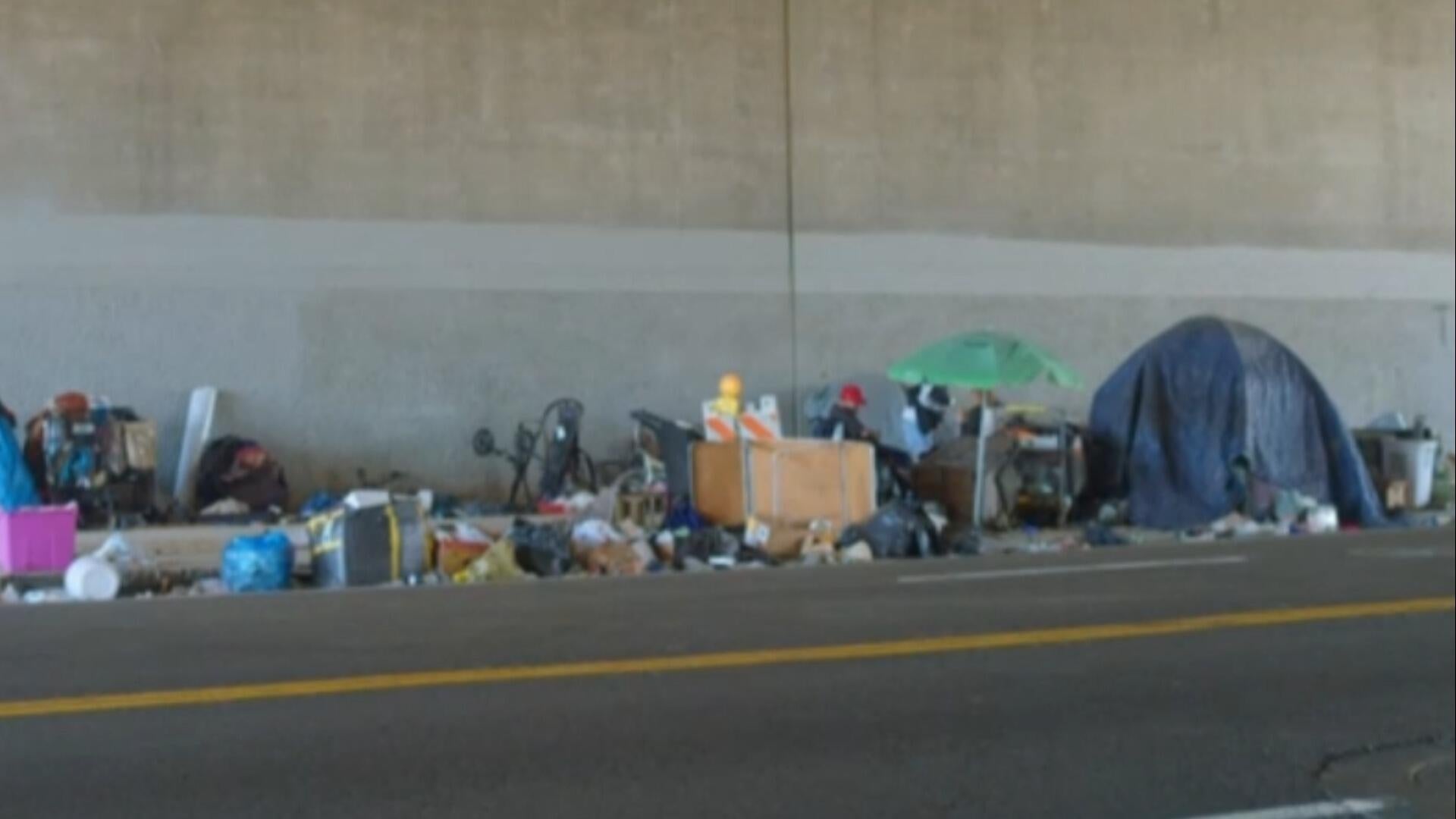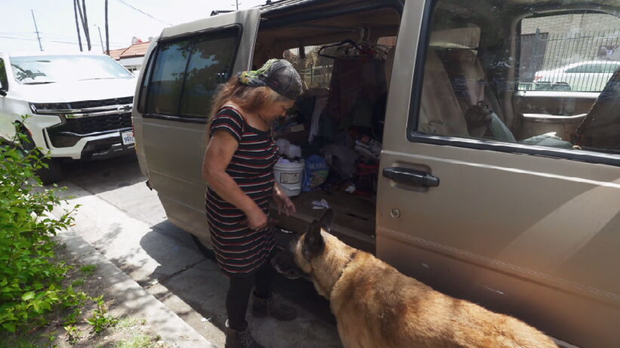Growing number of Americans 55 and older are experiencing homelessness. Health workers worry about the "most vulnerable."
Homelessness in America has been steadily ticking up in recent years. In 2024, the United States saw an 18% increase in the homeless population from the year before — and those providing essential services like health care and housing assistance say they're most concerned about the aging population.
More than 140,000 Americans who are 55 or older are experiencing homelessness on any given day, and that number is estimated to nearly triple by 2030, according to a 2019 . Rose Del Rosario is among the aging homeless population growing across the United States.
The 65-year-old has high blood pressure and lifelong asthma. One morning, she received an atypical house call from Daniel Speller, a physician associate with , a nonprofit providing assistance to people like Del Rosario across California. Speller took her vitals inside a medical van parked across the street from her RV in San Pedro.
Del Rosario doesn't have health insurance, so she would sometimes purchase inhalers from people or find them in the trash. While she said she doesn't feel safe using them, she had no money left after her husband died several years ago — and that's how she wound up on the streets.
When asked how she feels about navigating homelessness at this age, she said it makes her feel older.
"I feel like it's aging me. I feel like it's aging me a lot," Del Rosario told CBS News. "It's just hard to live like this."
Approximately 20% of the more than 771,000 people who were unhoused in the U.S. as of January 2024 were 55 and older, according to the . Homelessness is often caused by the death of a spouse, divorce, joblessness, eviction or mounting medical issues, the U.S. Interagency Council on Homelessness says.
"These are folks entering the stage where they're starting to have multiple complex chronic medical conditions that need to be met, and they're just not being met," Speller told CBS News. "They're also the most vulnerable."
Dennis Culhane, a professor at the University of Pennsylvania whose research focuses on homelessness and assisted housing policy, told CBS News that the aging trend in the homeless population has been going on for 30 years. The second half of the Baby Boomers generation — those born between 1955 and 1964 — have constituted the largest subsegment of the U.S. population since 1990, Culhane explained on "CBS Evening News."
Because there are more of them, it puts them at higher risk of homelessness, Culhane said, but there are also other factors.
"They came of age in the early 1980s at a time when there was very high unemployment and housing costs were rising," he said. "A lot of these folks were unable to get into the labor market by their mid-20s, so they've struggled for years trying to get a toehold in the workforce."
When asked about the impact of the trend of public policy, Culhane said the major impact is on health care systems.
"They end up hospitalized at very high rates. They often can't be discharged in a timely fashion because they have no place to go back to and no family to support them. So they often will end up in nursing homes, even though in those nursing homes they will often get discharged right back into homelessness," Culhane said.
Healthcare in Action CEO Dr. Indu Subaiya said she fears the impact rising costs and potential cuts to government programs like Medicaid will have on seniors.
"I don't believe we should be cutting Medicaid for those populations. We should leave those intact. And that will be so, so helpful to people not falling further into the hole," Subaiya told CBS News.
At 65 years old, Del Rosario says she thought she'd be somewhere else for retirement.
"On a nice comfortable rocking chair waiting for the casserole to come out of the oven," she said. "I didn't think it would be like this."





